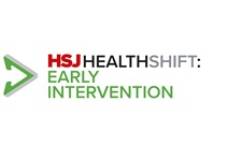The government’s push to reduce NHS waiting lists through the independent sector raises workforce management issues. RLDatix’s Optima platform seeks to streamline rostering, boost staff engagement, and cut costs.
Advertorial by

Earlier this year, with one in seven people waiting for NHS treatment, health and social care secretary Wes Streeting made a point of defending the government’s commitment to using the independent sector to reduce NHS waiting lists. Some have criticised relying on the independent sector to help reduce the elective care backlog, but the government is sticking to its objective. This will have implications for the independent sector and its workforce.
Workforce management is a key priority for any healthcare provider and for a workforce management solution to be effective it must be flexible and scalable, and ensure the right staff are available at the right time to deliver safe and effective care. This means being able to centralise and streamline rostering operations to drive cost savings as well as enabling managers to plan, deploy people, and resource safely, in the most sustainable and fair way.
However, there is one factor that is often missed when it comes to workforce management. Thinking beyond creating schedules and running payroll, the best workforce solutions ensure resources are used strategically and help staff have a more balanced work-life dynamic.
Optima from RLDatix helps to improve work-life balance and reduce burnout. Loop, an app which allows employees to take control of their work-life admin, anytime and anywhere, is part of the Optima suite. Staff can view their personal and team rosters, see what activities they are scheduled for, book leave requests, request bank shifts, and log call outs.
A recent example of Optima’s eRostering transformative potential is at community services specialist HCRG Care Group where 5,000 mostly field-based employees were transitioned to the Loop platform from a web-based news portal and separate rostering app.
Key to this process was integrating rosters and engagement tools into one platform while managing the complexities of such a broad-scale change. The aim was to reduce reliance on email and other communication channels, cut agency spend, and enhance engagement with bitesize internal communications delivery while switching to a mobile-first solution.
HCRG Care Group’s communications team spearheaded the transition to RLDatix’s Loop, collaborating with HR and operational teams to integrate personal rosters and highly relevant, targeted communications into a unified platform.
The transition to Loop resulted in more than 4,000 active users within three months, placing HCRG Care Group among the top 20 organisations using Loop for engagement. There was a notable increase in the uptake of bank opportunities, enhanced engagement with bite-sized news content, and a reduction in reliance on traditional email communications.
HCRG Care Group director of group marketing Nic Chambers-Parkes says: “The transition to Loop at HCRG Care Group not only simplified our communication and rostering processes but also significantly increased user engagement and is reducing our reliance on email. We learned that effective integration can lead to unexpected benefits: we saw a significant increase in bank shift take up, reducing agency spend and helping to deliver benefits for our service users and colleagues as well as the organisation.
“Embracing new formats and adapting our approach around how Loop works was key to our success, proving that flexibility and innovation are crucial in achieving impactful results.”
For a detailed review of your workforce processes and to learn insights into possible operational challenges, and understand the benefits of automation with systems like RLDatix Optima, please click here to learn more.


























